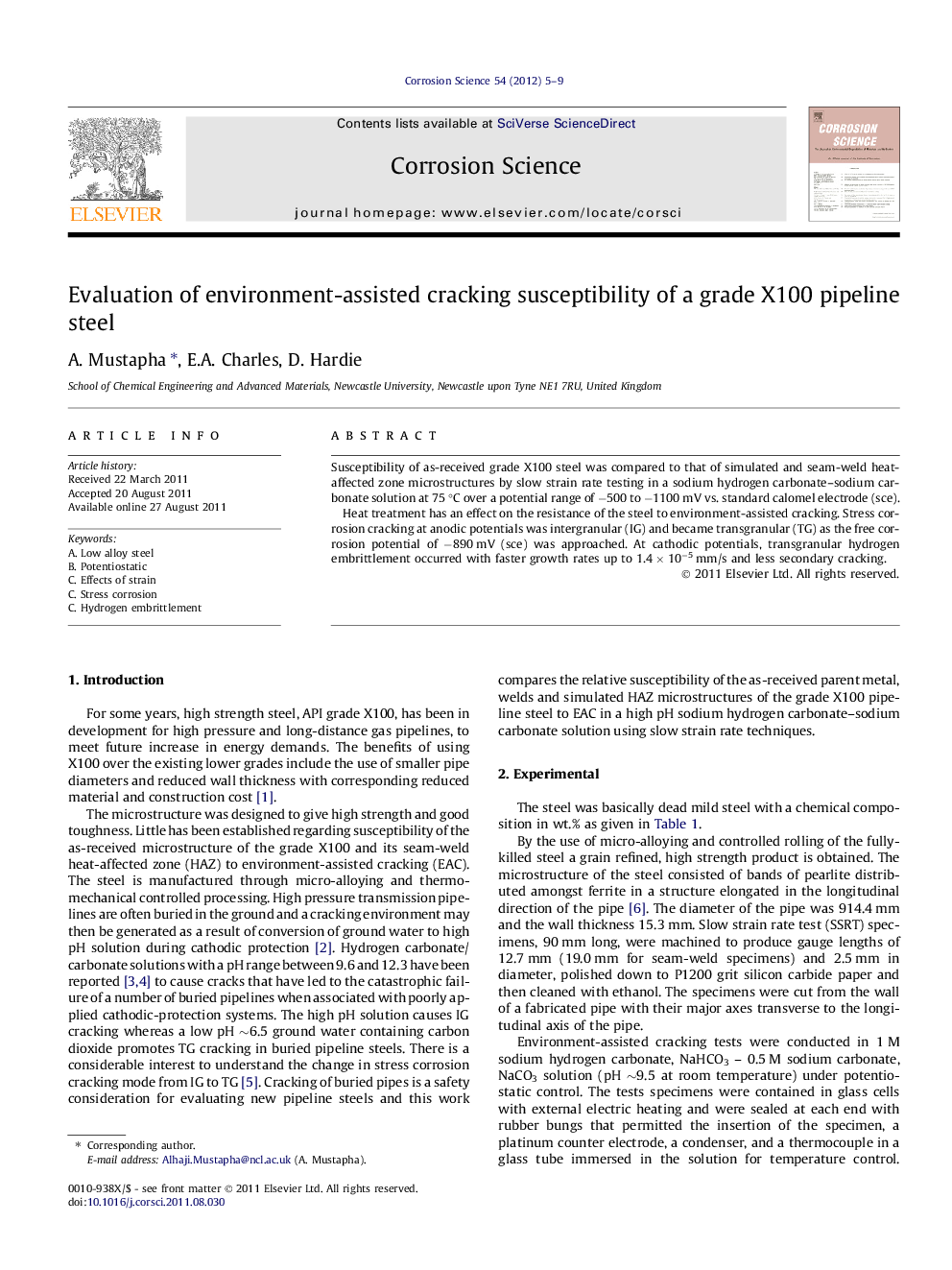| Article ID | Journal | Published Year | Pages | File Type |
|---|---|---|---|---|
| 1470038 | Corrosion Science | 2012 | 5 Pages |
Susceptibility of as-received grade X100 steel was compared to that of simulated and seam-weld heat-affected zone microstructures by slow strain rate testing in a sodium hydrogen carbonate–sodium carbonate solution at 75 °C over a potential range of −500 to −1100 mV vs. standard calomel electrode (sce).Heat treatment has an effect on the resistance of the steel to environment-assisted cracking. Stress corrosion cracking at anodic potentials was intergranular (IG) and became transgranular (TG) as the free corrosion potential of −890 mV (sce) was approached. At cathodic potentials, transgranular hydrogen embrittlement occurred with faster growth rates up to 1.4 × 10−5 mm/s and less secondary cracking.
► The effect of heat treatment on the susceptibility of X100 steel to EAC was studied. ► Changes in microstructure of simulated heat-affected zones have been investigated. ► Potential ranges of SCC and hydrogen embrittlement are identified. ► Regions of IG and TG cracking modes are characterised.
